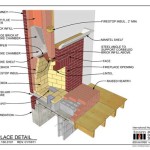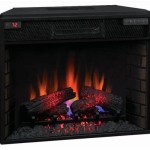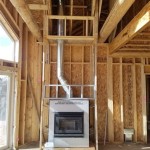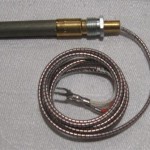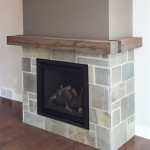Craftsman Fireplace Design Ideas: Integrating Function and Heritage
The Craftsman style, with its emphasis on natural materials, honest construction, and practical design, offers a timeless aesthetic for fireplace design. Grounded in the Arts and Crafts movement, this style emphasizes handcrafted elements and a connection to the surrounding environment. Integrating a Craftsman fireplace into a home provides not only a source of warmth but also a focal point that reflects enduring architectural principles.
Craftsman fireplaces typically feature robust materials such as stone, brick, and wood. The design often prioritizes functionality, emphasizing clean lines and a harmonious blend with the overall interior architecture. Details, while present, are typically understated and serve to enhance the natural beauty of the materials used. Color palettes often draw inspiration from nature, incorporating earthy tones like browns, greens, and grays.
Key Point 1: Material Selection: Emphasizing Natural Elements
The selection of materials is paramount in creating an authentic Craftsman fireplace. Stone, particularly river rock, fieldstone, or slate, is a common choice for the fireplace surround and hearth. These natural stones bring a sense of ruggedness and connection to the outdoors. The arrangement of the stones can vary, from carefully stacked and mortared to more rustic, irregular patterns. The specific type of stone selected should complement the overall color scheme and architectural style of the home.
Brick, especially reclaimed or antique brick, is another popular option. The texture and color variations found in reclaimed brick contribute to the character and warmth of the fireplace. The brick can be laid in various patterns, such as running bond or herringbone, to add visual interest. Mortar color also plays a crucial role. A lighter mortar can create a more contemporary feel, while a darker mortar enhances the contrast and highlights the individual bricks.
Wood is typically incorporated as a mantel or as decorative trim around the fireplace surround. Commonly used wood species include oak, maple, and cherry, often finished with a clear stain to showcase the natural grain. The mantel can be simple and clean-lined or more elaborate with corbels and decorative carvings. The wood should be properly sealed and finished to protect it from heat and moisture.
The combination of stone, brick, and wood creates a layered and textured aesthetic that is characteristic of Craftsman design. Thoughtful consideration of the textures and colors of these materials is essential to achieving a cohesive and visually appealing fireplace.
Key Point 2: Design Elements: Incorporating Authentic Details
Several design elements contribute to the distinctive look of a Craftsman fireplace. A prominent mantel is a standard feature, serving as both a functional shelf and a decorative element. The mantel can be made of wood, stone, or a combination of both. Its design should complement the overall fireplace surround and the architectural style of the home.
Built-in cabinetry or shelving flanking the fireplace is another common feature. These built-ins provide storage space and create a sense of symmetry and balance. The cabinetry can be simple and functional or more decorative with recessed panels and custom hardware. The color and finish of the cabinetry should coordinate with the other wood elements in the room.
The firebox itself should be of appropriate size and design for the fireplace. A traditional wood-burning firebox offers a classic aesthetic, while a gas-burning firebox provides convenience and efficiency. The firebox should be properly sized for the room and should meet all safety standards. Decorative fire screens and andirons can be added to enhance the visual appeal of the firebox.
Tile accents can be incorporated into the fireplace surround to add color and pattern. Subway tile or mosaic tile in earthy tones or muted colors are popular choices. The tile can be used to create a border around the firebox or to decorate the mantel. The tile should be durable and heat-resistant.
Lighting plays a crucial role in highlighting the fireplace and creating a warm and inviting ambiance. Sconces or recessed lighting can be used to illuminate the fireplace surround and mantel. The lighting should be dimmable to allow for adjustable brightness levels.
Key Point 3: Placement and Integration: Harmonizing with the Existing Architecture
The placement of the fireplace is crucial to its integration into the overall design of the home. A Craftsman fireplace is often located in the living room or family room, serving as a focal point for the space. The fireplace should be positioned so that it is visible from multiple vantage points and accessible to seating areas.
The scale of the fireplace should be appropriate for the size of the room. A fireplace that is too large can overwhelm the space, while a fireplace that is too small may not make a significant impact. The proportions of the fireplace should be carefully considered to ensure that it is in harmony with the other architectural elements in the room.
The fireplace should be integrated into the existing architectural style of the home. This includes considering the style of the windows, doors, and trim. The fireplace should complement these elements and contribute to a cohesive overall design. The color palette of the fireplace should also be consistent with the colors used throughout the home.
The fireplace should be properly ventilated to ensure safe and efficient operation. This includes ensuring that the chimney is properly sized and that the firebox is properly vented. Regular maintenance and cleaning of the fireplace are essential to prevent fire hazards and ensure optimal performance.
The surrounding furniture and decor should be chosen to complement the Craftsman style of the fireplace. This includes selecting furniture with clean lines and natural materials, such as wood and leather. Area rugs with geometric patterns or earthy tones can be used to define the seating area around the fireplace. Artwork and accessories with natural themes can further enhance the connection to the outdoors.
Consider the functionality of the fireplace in relation to the surrounding space. Ensuring proper clearances for furniture and walkways around the fireplace is important for safety and comfort. Integrating storage solutions for firewood or fireplace tools can add to the practicality of the design.
Careful planning and attention to detail are essential to creating a Craftsman fireplace that is both beautiful and functional. By considering the materials, design elements, and placement of the fireplace, it is possible to create a space that reflects the enduring appeal of this timeless architectural style.
Ultimately, a well-designed Craftsman fireplace becomes more than just a source of heat; it becomes a central gathering place for family and friends, a reflection of personal style, and a testament to the enduring values of craftsmanship and quality.

The Craftsman Fireplace A Standout Fire Space

A Face For The Fireplace Design Arts Crafts House Homes

Home Improvement Build Your Own Fireplace Mantel Hearth Craftsman Style Make It Love Surrounds White Mantels Diy

Craftsman Fireplace Design Ideas S Remodel And Decor Family Room Home

Arts And Crafts Fireplace Google S Craftsman Mantels Mantel Designs

40 Fabulous Fireplace Design Ideas For Any Budget Or Style

Bungalow Prairie Style Custom Fireplace Craftsman Family Room Chicago By Interior Transformation Inc Houzz Au

Standout Fireplace Tile Arts Crafts Style

Adding Grace And Charm With Fireplace Mantels Inviting Home

75 Craftsman Living Room With A Tile Fireplace Design Ideas You Ll Love
Related Posts


